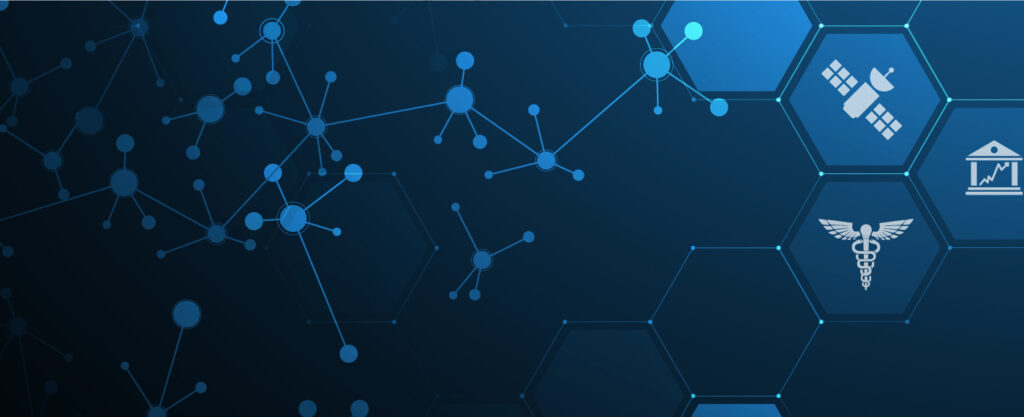The integration of Geographic Information Systems (GIS) and Blockchain technology has unlocked new possibilities in solving real-world challenges across diverse domains. By combining GIS’s spatial analysis capabilities with blockchain’s decentralized and immutable ledger system, organizations can achieve enhanced data accuracy, transparency, and security in various applications. From land registry and property management to disaster response and supply chain tracking, this fusion enables seamless tracking and verification of spatial data, ensuring trust and integrity in geographical information.
Earth Observation
The European Space Agency has recently called for new ideas and applications of Blockchain for Earth exploration. Already in China, there have been developments of a protocol using the common format of TCF of sending data to enable satellites to communicate and to share resources or apply communicative functions that do not repeat other satellites’ functions.
Medical Field
The medical field has already begun exploring Blockchain for sharing and providing secure medical information about patients and provider data. The integration of Blockchain with artificial intelligence (AI) has also allowed forecasting that can be used to assess patients and healthcare providers.
- Mapping and analyzing disease patterns: GIS is used to map and analyze the spatial distribution of diseases, such as COVID-19, malaria, cancer, etc. It is also used to identify risk factors, hotspots, clusters, and trends of diseases.
- Optimizing health care resources: GIS is used to optimize the allocation and accessibility of health care resources, such as hospitals, clinics, pharmacies, and ambulances. GIS is also used to plan and evaluate health care services, such as emergency response, vaccination campaigns, and telemedicine.
- Monitoring and evaluating health interventions: GIS is used to monitor and evaluate the impact and effectiveness of health interventions, such as disease prevention, treatment, and control. GIS is also used to measure and compare health outcomes, such as mortality, morbidity, quality of life, etc.
- Enhancing health education and communication: GIS can be used to enhance health education and communication by providing visual and interactive tools that can help raise awareness, inform decision-making, and promote behavior change.
Financial Services
Financial services have greatly benefited from the integration of GIS and Blockchain technologies in several ways:
- Improved Risk Management: GIS and Blockchain help financial institutions to share data and manage risks, such as those associated with natural disasters or real estate investments.
- Enhanced Customer Service: Financial institutions can use GIS and Blockchain to better understand the demographics, behaviors, and needs of their customers, enabling them to offer more personalized and efficient services.
- Operational Efficiency: Blockchain automates routine tasks, reducing the need for intermediaries, and ensuring the accuracy and integrity of financial records.
- Fraud Reduction: The immutable and transparent nature of Blockchain, using smart contracts, makes it difficult for fraudulent activities to occur and through its distributed environment, ransomware attacks are neutralized.
- Regulatory Compliance: Blockchain can provide an immutable audit trail, making it easier for financial institutions to demonstrate compliance with regulatory requirements. Governance policies demand that smart contracts code is auditable and verifiable.
- Cost Savings: By eliminating the need for intermediaries and reducing the potential for errors, Blockchain and GIS can result in significant cost savings.
- Faster Transactions: Blockchain can speed up transaction times by enabling peer-to-peer cross-border transfers and instant settlement.
By leveraging both GIS and Blockchain technologies, industry executives and management teams can enhance their decision-making processes, improve customer service, increase operational efficiency, and ensure greater security and compliance.

